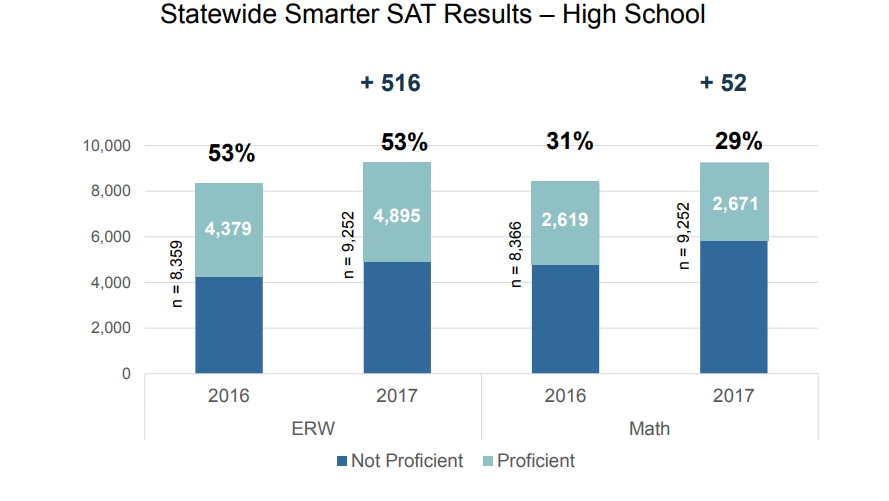Three Things To Know about Delaware State Tests
It is that time of year again—the release of Smarter Assessment and SAT results. The Delaware Department of Education officially released data in late July. While reactions were mixed (see the official release from DDOE, as well as The News Journal’s reaction), we tried to look behind the numbers to shed a bit more light on the results.
- 1,300 more students scored proficient in Smarter Math.
And about 250 more students were proficient in reading this year. However, we should note that overall public school enrollment grew by about 1,000 students in the last two school years—from 136,000 in 2015-16 to 137,000 in 2016-17. It stands to reason that the more students taking the test would increase overall student proficiency data.
- State math and ELA proficiency averages were unexciting.
Smarter math proficiency only went up one percent from last year, and ELA actually dropped one percent. Still, over time we see an increase in proficiency since the test was first implemented in 2015.
- Despite the underwhelming numbers, there were some standouts—and disappointments.
Though so-called “priority schools” saw varied achievement level results, in a two-year window Laurel Middle School saw a 24-percent increase in math proficiency and a 19 percent increase in ELA proficiency.
Middle grades (fifth and sixth) statewide also exhibited dramatic jumps in proficiency levels for math and reading.
Unfortunately, third grade reading proficiencies have dropped two points since 2015.
SAT results were relatively stagnant for reading and writing, with a small drop in math. Math remains a challenge for Delaware, with less than one third of high schoolers being college and career ready in math.
What does it all mean?
As we’ve noted before, the Smarter Assessment is tough by design. It is not the average multiple-choice test. It requires students to complete performance tasks and think critically, reflecting the challenges students will face in college or the workplace.
There are other measures of student performance. In 2017-18, schools will begin to measure growth in student achievement as well. That is, we will begin to see what percentage of students are moving from below standard to meeting or exceeding the standard, rather than just our current measure of the percentage meeting the standard. To see more on how Delaware will be measuring student achievement and other accountability metrics, see the recently approved ESSA plan.
We should focus on the whole student, not just the test. Statewide test scores are important, but they are just one of many indicators of student success. While Delaware makes progress across other areas (like graduation rates, early college and career experience, workforce participation), there continues to be a need for cultivating the social and emotional development of our students. To see more on how social and emotional learning can impact students, check out our Social and Emotional Learning page.
Related Topics: assessment, Common Core, Delaware, opt out, SATs, schools, SMARTER Balanced, standards, testing





